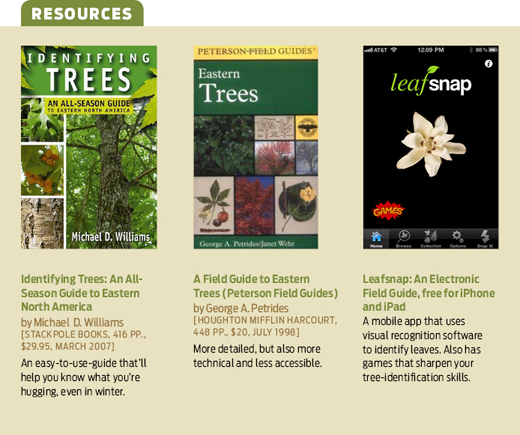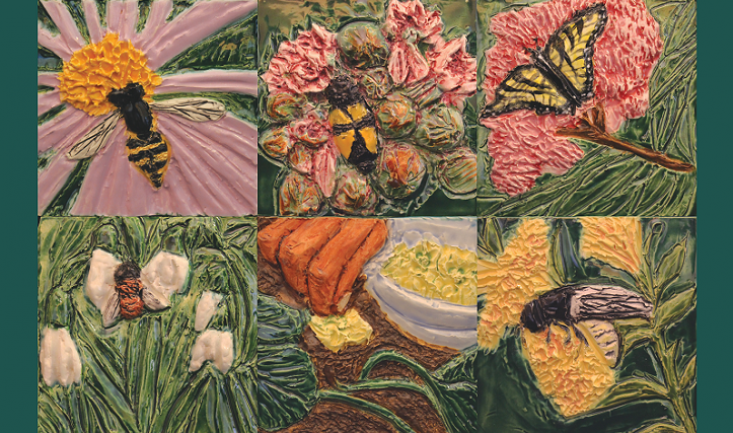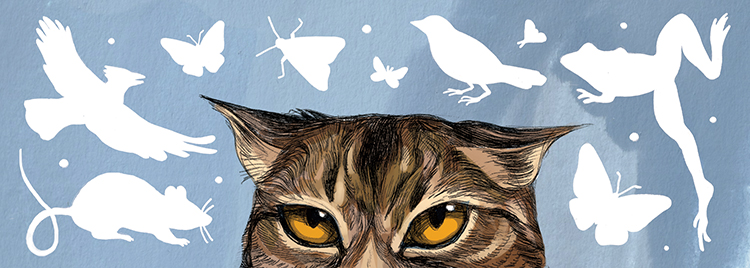 story by Bernard Brown | photos by Jen BrittonFor at least 10 years I’ve been trying to learn more about trees. Back when I lived in Atlanta, I resolved to identify the trees growing in a large wooded park near my home. I bought a Peterson field guide and got to work. I did okay with the big differences between, for example, the oaks and the ashes, the maples and the magnolias, but I had had little patience for the finer points. Was that an iron wood or a hornbeam? If it meant I had to count the scales on their itty-bitty buds, it was too much effort for a reptile and amphibian guy (herper) like me.
story by Bernard Brown | photos by Jen BrittonFor at least 10 years I’ve been trying to learn more about trees. Back when I lived in Atlanta, I resolved to identify the trees growing in a large wooded park near my home. I bought a Peterson field guide and got to work. I did okay with the big differences between, for example, the oaks and the ashes, the maples and the magnolias, but I had had little patience for the finer points. Was that an iron wood or a hornbeam? If it meant I had to count the scales on their itty-bitty buds, it was too much effort for a reptile and amphibian guy (herper) like me.
I took this as a personal shortcoming. No one was stopping me from picking up my guidebook and a magnifying glass and getting to work. Year after year I was too lazy to teach myself. So when I recently learned I’d made friends with a botany nut, I resolved to convince her to teach me.
Awbury Arboretum was a perfect place to start. The property was originally owned by the shipper Henry Cope in the 1800s. Cope was the uncle of herpetologist/paleontologist Edward Drinker Cope, enforcing my conviction that this was the place for a herper like me to learn about trees.
Trees are everywhere at Awbury, of course, and many were labeled! My friend Ali and I sat with our guidebooks (I brought one; she brought four) and Ali’s magnifying loupe, a handheld magnifying lens [Figure 1]. We made guesses at tree species then, checked our work against the tree labels.
 When trying to name trees, leaf shape can be helpful, but it can also be a crutch. You can get pretty far with the branching and leafing patterns—are the leaves (or where they’re attached) set opposite each other, or do they alternate? Bark can also reveal a lot, as can the buds that will unfurl into next year’s leaves, even in autumn.
When trying to name trees, leaf shape can be helpful, but it can also be a crutch. You can get pretty far with the branching and leafing patterns—are the leaves (or where they’re attached) set opposite each other, or do they alternate? Bark can also reveal a lot, as can the buds that will unfurl into next year’s leaves, even in autumn.
However, those buds can be painfully tiny. At about a quarter inch we needed a magnifying loupe to tell the black cherries (pointed bud scales) from choke cherries (rounded bud scales).
For differentiating black and red oaks, the leaves are similar, but bark is different—ridges on the red oak’s bark [Figure 2] sort of run together.
Birches make it a little easier. Here’s a river birch [Figure 3] with its beige bark peeling in obvious, ruffling curls.
During winter months, tree identification can focus on the micro scale, but visitors to Awbury can also take in the macro in these months. The arboretum boasts grand old lindens and beeches, the second largest river birch in Pennsylvania, and landscapes ranging from wetlands and meadows to forests and English parkland.
Bernard Brown is an amateur field herper, bureaucrat and founder of the PB&J Campaign (pbjcampaign.org), a movement focused on the benefits of eating lower on the food chain.







